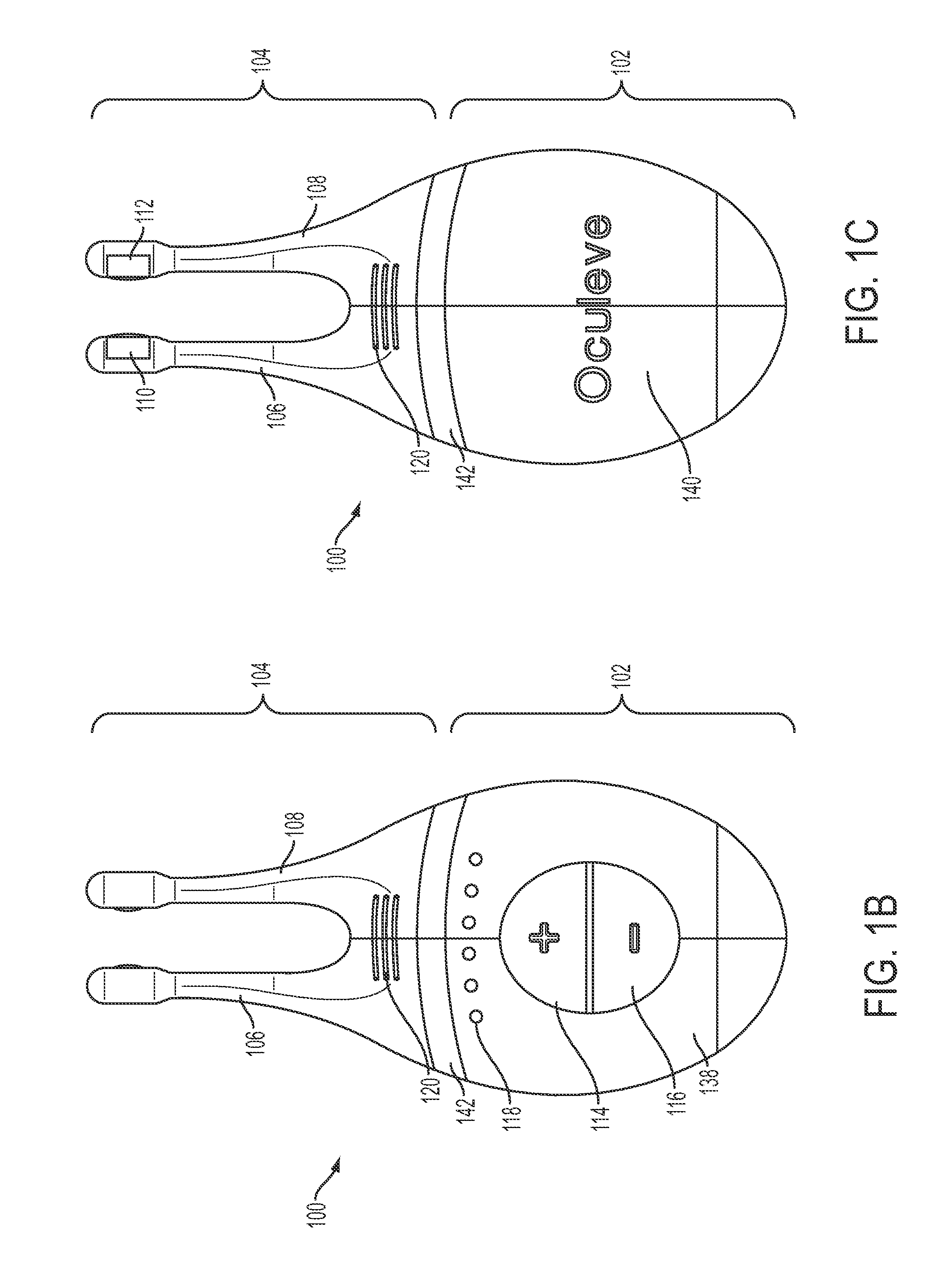Nasal stimulation devices and methods
a technology of needle stimulation and needles, which is applied in the direction of contraceptive devices, artificial respiration, therapy, etc., can solve the problems of reduced vision-related quality of life, visual disturbance, ocular discomfort, etc., and achieve the effect of improving ocular health in patients, improving ocular health, and improving ocular health
- Summary
- Abstract
- Description
- Claims
- Application Information
AI Technical Summary
Benefits of technology
Problems solved by technology
Method used
Image
Examples
example
[0232]A prospective, single phase, open label, single arm, non-randomized study was carried out. Inclusion criteria included males and females 18 year of age or older; a Schirmer's Tear Test (described below) with topical anesthesia of less than or equal to 15 mm in 5 minutes in both eyes at least of two screening visits; at a first screening visit, a Schirmer's Tear Test with topical anesthesia and nasal stimulation with a cotton swab of at least twice or at least 10 mm higher than the first of two unstimulated values in both eyes; a baseline Ocular Surface Disease Index (OSDI) score (described below) of at least 13 with no more than 3 responses of “not applicable” at each of the two screening visits; normal lid anatomy, blinking function, and closure; and corrected visual acuity of 20 / 200 (Snellen equivalent) or better in each eye at both screening visits.
[0233]Subjects were provided a handheld stimulator probe as described herein with respect to FIG. 14, but without electrode cov...
PUM
 Login to View More
Login to View More Abstract
Description
Claims
Application Information
 Login to View More
Login to View More - R&D
- Intellectual Property
- Life Sciences
- Materials
- Tech Scout
- Unparalleled Data Quality
- Higher Quality Content
- 60% Fewer Hallucinations
Browse by: Latest US Patents, China's latest patents, Technical Efficacy Thesaurus, Application Domain, Technology Topic, Popular Technical Reports.
© 2025 PatSnap. All rights reserved.Legal|Privacy policy|Modern Slavery Act Transparency Statement|Sitemap|About US| Contact US: help@patsnap.com



